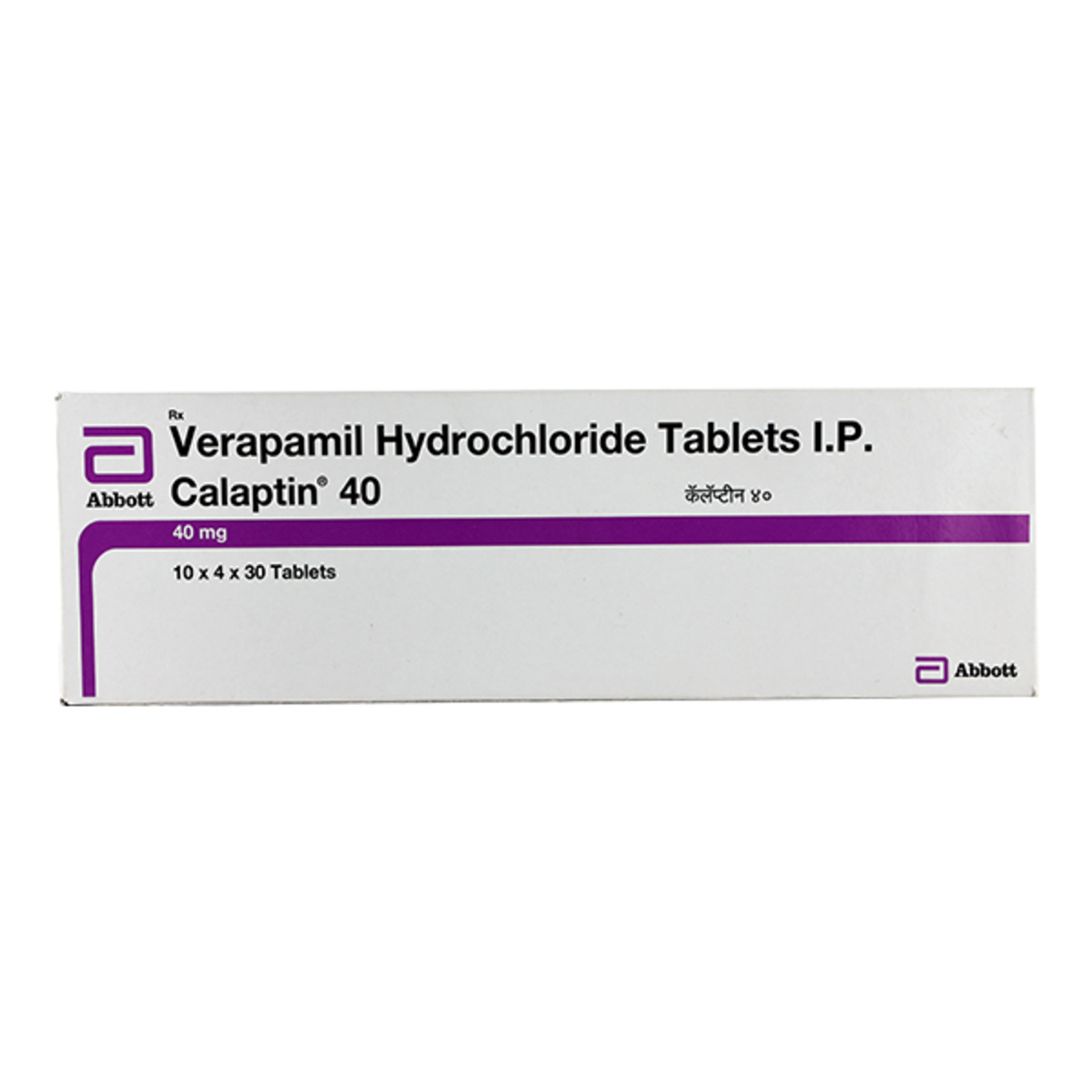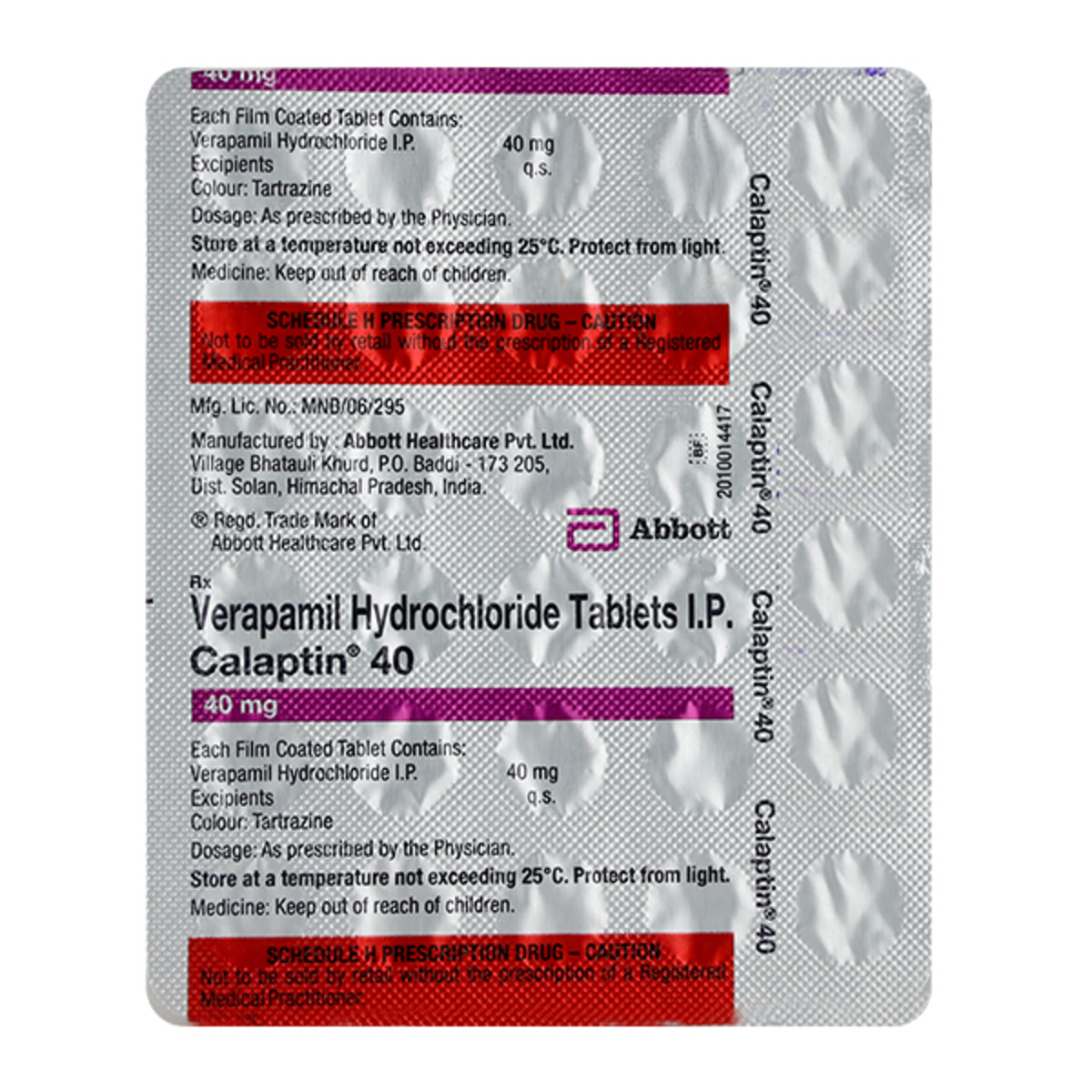Calaptin 40 Tablet
Prescription required
Manufacturer Abbott
Salt Composition Verapamil (40mg)
₹ 26.00
MRP ₹ 28.89
(10% OFF)
Inclusive of all taxes
Package SIZE
1 Strip of 30 tablets
100% Authentic
Products
Free
Shipping*
Products
Return Policy
Description:
Calaptin 40 Tablet is used to treat angina (heart-related chest pain), high blood pressure, and some types of irregular heartbeats (arrhythmia). It works by relaxing blood vessels to lower blood pressure. This helps to reduce the workload of the heart.
Uses / Indications:
Treatment of Hypertension (high blood pressure)
Treatment of Angina (heart-related chest pain)
Treatment of Arrhythmia
Interactions / Warnings:
It is unsafe to consume alcohol with Calaptin 40 Tablet.
- Pregnancy interaction:
- Calaptin 40 Tablet may be unsafe to use during pregnancy. Although there are limited studies in humans, animal studies have shown harmful effects on the developing baby. Your doctor will weigh the benefits and any potential risks before prescribing it to you. Please consult your doctor.
- Side Effects:
- Constipation Dizziness Nausea Hypotension (low blood pressure) Headache
- How to use:
- Take this medicine in the dose and duration as advised by your doctor. Swallow it as a whole. Do not chew, crush or break it. Calaptin 40 Tablet is to be taken with food.
- How it works:
- Calaptin 40 Tablet is a calcium channel blocker. It blocks the action of calcium on the heart and blood vessels, thereby widening the blood vessels and allowing more blood and oxygen to reach the heart. This reduces blood pressure and decreases the chances of angina (chest pain).
- Faq for medicine:
- Q. What is Calaptin 40 Tablet? What is it used for? Calaptin 40 Tablet belongs to a class of medicines known as a calcium-channel blockers. It is used to treat a number of heart and blood vessel-related conditions such as abnormal heart rhythms (arrhythmias), high blood pressure (hypertension) and angina (heart related chest pain). Q. How does Calaptin 40 Tablet work? Calaptin 40 Tablet works by relaxing the blood vessels which helps to reduce the workload of the heart. It also increases the supply of blood and oxygen to the heart and slows electrical activity in the heart to control the heart rate.


